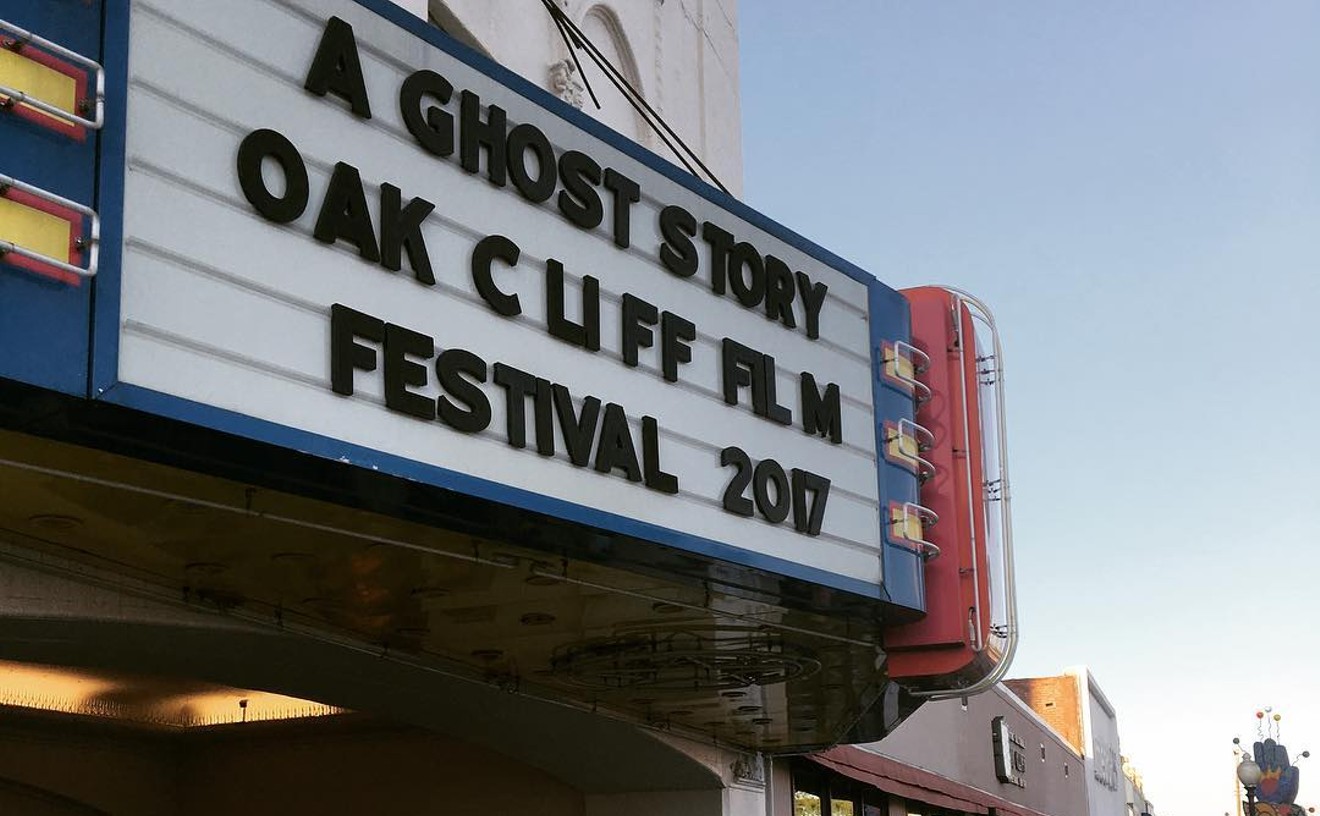Joseph Stashkevetch does just that, though, in one of his newest works, and so well that all that carnality suddenly looks quite beautiful. The pale fat that marbles its way through the meat, the translucent plastic of its shipping container, the shiny plane of the steel belt that whirs it all away to the waiting trucks--these elements are so distilled and romanticized in Stashkevetch's grayscale drawing that they become the unlikely subjects of a tranquil still life.
Not that the New York artist harbors some macabre fascination for dead meat; of all his new works on display at Turner and Runyon Gallery, "Meat #1" is the only giant drawing that stars anything that used to breathe. The other works, charcoal and conte crayon on paper with subtle washes of watercolor, veer toward more palatable industry: oil refineries, highway mixmasters, nuts-and-bolts machine parts. Still, Stashkevetch has a mean way with tight focus and shadows, turning the potential for photo-realism into something far more sooty and fascinating. Post-slaughterhouse view or not, the ghosts of Upton Sinclair, Charles Dickens, and the Industrial Revolution haunt these wholly contemporary images. Only Stashkevetch and the better part of a century have thoughtfully removed the social and literal mess. The results: grim, but utterly beautiful; dour, but mythical. It's mankind's not-always-pretty effect on the landscape turned droll and meditative. Take out all signs of human life, and leave it to the machines to tell our story of questionable progress, evoking Charles Sheeler's early-century, coldly breathtaking portraits of factories and freight trains, or Alfred Stieglitz's photographic observations of a nation's rapid, oft-chaotic growth. Like Sheeler, Stashkevetch is more reverent than cynical; he has to be to pull off the romanticism. Yet the sly question "Is this good for us?" seethes beneath the picture plane.
What most visibly separates Stashkevetch from Sheeler is the sculptural power of his imagery. Sheeler was all about planes and sharp angles and pure colors; Stashkevetch folds the shadows and tones around his objects like smooth, coal-smeared blankets. The big picture is one of glass-like clarity, while the actual lines, up-close, are softened at their edges, gliding into one another on trails created by the medium: the dust and graphite of the drawing instruments, the texture of the heavy paper. This way, the curves that fill a landscape of thick metal bolts in "Machine Parts #2" look as liquid as they do steely, the light glinting off their surfaces like blazing firelight. As the bolts surge into the foreground, the abstraction amplifies and darkens with creepy aggression, and as it recedes it loosens and brightens, the whole creating a paradox. Should we be hypnotized or scared? Perhaps both.
His drawings of refineries make the most of Stashkevetch's gift for scale, light, and atmosphere; the 60-inch surface captures the huge, milky-white buildings' looming gazes. Sprinkled across Texas--the artist interprets his images from photographs, and the ones in this show were taken in this region during his visit here months ago--the towers are part vacuous and part beautiful, and the artist distills their personality in simple, intense brights and darks, and then surrounds them with a sepia haze. You can't see the ground from which they grow, giving them a sense of infinite height, and you can't spy a single living creature in their vicinity, casting the towers as self-reliant monoliths in a timeless, unsettling story.
Stashkevetch has explored similar themes of "machine as model" for years. His ashen drawings of trains and autos and bridges, from the West Coast to the East and even Europe--with the images' iconography so distinctive you can pretty much name their origins--are what snagged the attention of the Whitney, the San Francisco Modern, and the Dallas Museum of Art, which recently acquired one of his pieces. His newest works seem to be moving stealthily from one kind of mechanization to another: dilapidated roller-coaster tracks, shiny new satellite dishes--exploring their various bugs and beauty before moving on to another subject. He's leaving some damn provocative translations in his path.
At gallery 414 in Fort Worth, easily one of the strongest, edgiest art spaces in Cowtown, there's a three-man show that, oddly, threatens to suck viewers into its gaping yawn. Strike one, strike two--then finally, a hit.
Sometimes when you view an artist's current work, you feel like holding your breath for him to grow out of it, what we can refer to as the "you're stuck in a crappy phase and why can't you see that?" syndrome. And when that series of dull, uninspired works is all you have to go by, you just have to cross your fingers for the guy and hope he'll move on sooner than later. Jeff White has some interesting ideas about communication and the current state of mankind's soul. Too bad they don't make it into his artwork.
White slices up the journal writings of people, all scrawled on tepid greenish graph paper, and shellacs them to a flat surface, mosaic-style. In the midst of these geo-clean shapes and random scribbles he's tossed in a few hand-sized wooden discs--beige, with holes in their centers, and swimming in translucent hardened glue, evoking giant Cheerios in skim milk. No visual depth, no inspired layering of context, no hooks for the viewer besides the option of reading some of the strangers' words, and that gets real old, real quickly. It's difficult to care when the pieces are about as interesting to the eye as the blank wall behind it.
Andrew Daleo has a nice way with airplanes, less of a way with color choices. His series of Messerschmitt fighter planes, the kind the Nazis sent into dogfights during World War II, flits into your view with worthy, big-canvas aplomb, but fails to deliver the bullets. Unlike White, Daleo is being ironic, by coloring this brutal icon as a flat platter of Easter-egg pastels. I don't know, but even generations removed from the action, I can't reconcile what the planes mean within our history and the way Daleo chooses to undercut that meaning with a flippant attitude, like he just decided to paint airplanes because they look cool.
Even if he's trying to be ironic, you've got to deliver a razor-sharp message to make it stick. Think James Rosenquist's rocket morphing into macaroni: The sense of massive technology and mass consumption were at a high when he painted "F-111" in 1964, and the imagery cut through a novel's worth of explanation. That Daleo doesn't even bother to finish out the images of the fighters gives this a half-assed, half-baked sheen, as though painting a symbol of war, of destruction, of pure adrenaline, and then glossing it with pink and green is enough to convey a younger generation's inability to comprehend real war.
Brynn Helber's work fares much better, mostly on the strength of his aggressive color use and his sink-into-the-depths backgrounds. One of his untitled works has all the surrealness of Yellow Submarine, only a bit more horror-show and lacking the arch cartooniness of Peter Max. Helber's scarlet sub drifting through a blood-red seascape of artichokes and dripping digestive-tract organs is effectively trippy, creepy, and funny all at once. It's his adding, on top of these, Freud-meets-LSD images that more often than not sabotages the original inherent beauty, or simple impact, of the works. Two ballerinas dance beneath a storm of appliances: blenders, toasters, vacuum cleaners. Really now. Billy Idol's "White Wedding" video, anyone?
But his toy paintings--that is, paintings that double as wall-mounted toys--are ingenious. They're beautifully crafted, and the single super-imposed images on small panels (again, submarine and artichoke) suffer from no forced associations. Just a lone sub propelling through the bottom of a mustard-yellow ocean, the panel surrounded by a gizmo-embellished frame of rich, red bubinga wood, anchored to the panel with dowels. Cut-out sea waves gush across the top of the frame, and if you turn the little attached crank, a small, smooth wooden submarine bobs up and down behind them. Same concept for the artichoke painting: Turn the crank, and three shiny bulbs tip and twirl on top, like a dancing crown. It creates a fitting conundrum for gallery art. You have to repress years' worth of hands-off training to play. And the odd imagery and off-kilter colors save these toys from abject cuteness. They're a bit too tweaked for actual kids.
Joseph Stashkevetch is at Turner and Runyon through November 25. Call (214) 653-1130. Jeff White, Andrew Daleo, and Brynn Helber are at Gallery 414 through November 22. Call (817) 926-4111.










